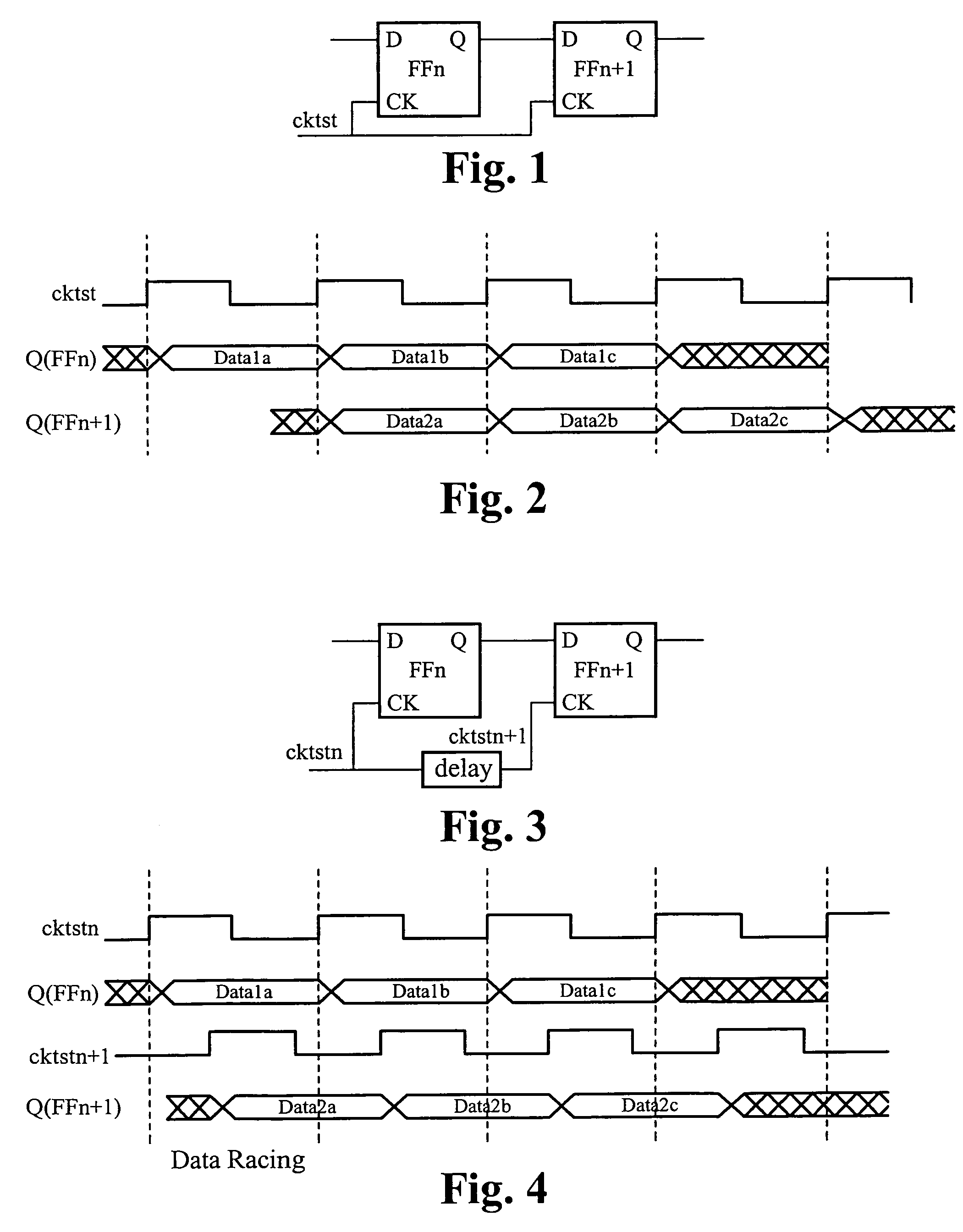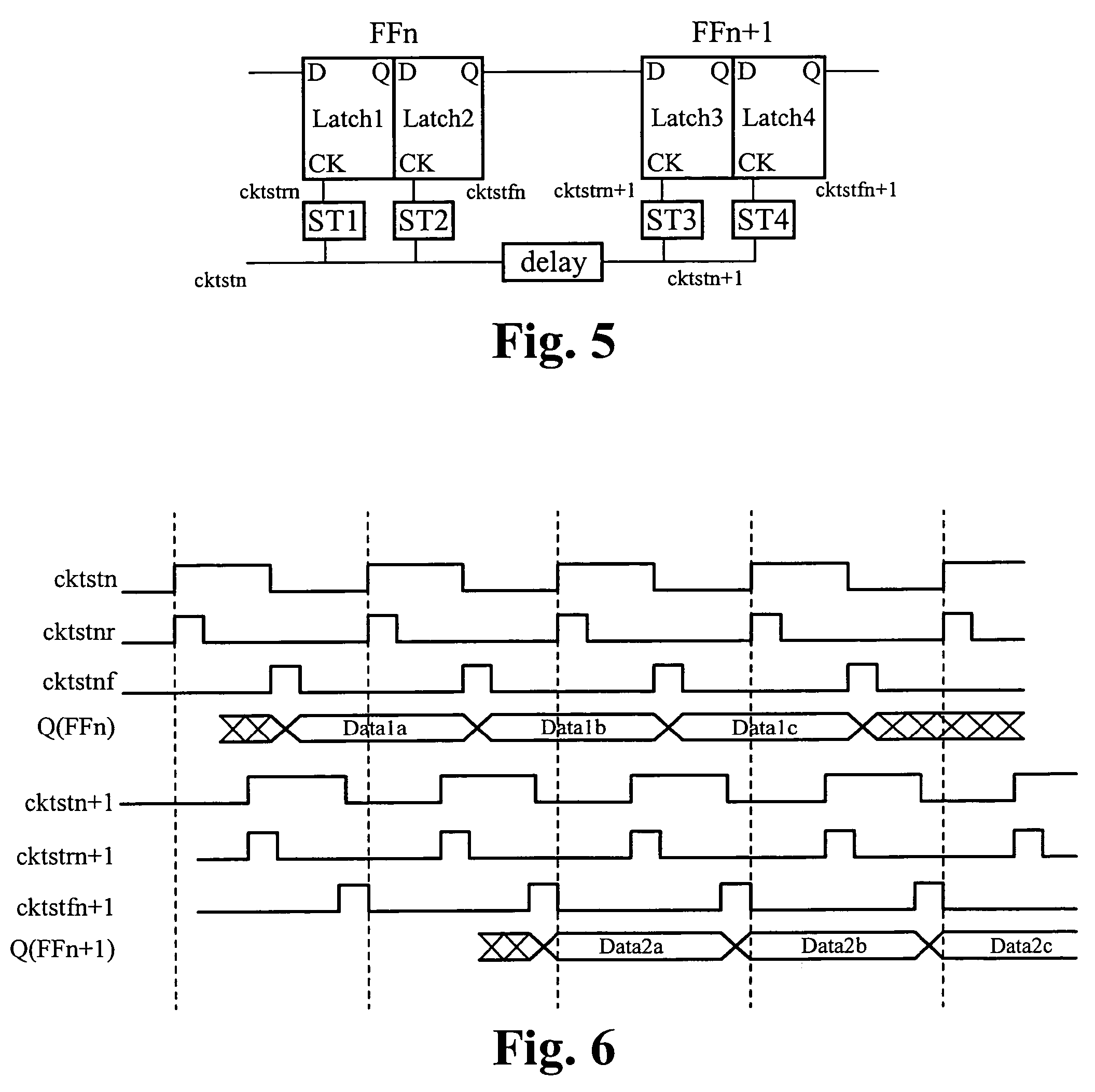Shift registers free of timing race boundary scan registers with two-phase clock control
a technology of boundary scan register and shift register, which is applied in the field of data registers, can solve the problems of boundary scan register, incongruent delay, and high cost of test equipment, and achieve the effect of avoiding incongruent delay, avoiding incongruent delay, and avoiding inconvenient operation
- Summary
- Abstract
- Description
- Claims
- Application Information
AI Technical Summary
Benefits of technology
Problems solved by technology
Method used
Image
Examples
Embodiment Construction
[0030]FIG. 5 illustrates a chain of two boundary scan registers configured according to the two-phase clock signal. A first boundary scan register FFn includes a latch 1 and a latch 2. A second boundary scan register FFn+1 includes a latch 3 and a latch 4. Each latch receives data at the input D, outputs data at the output Q, and receives a clock signal at the clock input CK. A self-timed pulse generator is coupled to the clock input of each latch. As shown in FIG. 5, a self-timed pulse generator ST1 is coupled to the clock input of the latch 1. A self-timed clock pulse generator ST2 is coupled to the clock input of the latch 2. A self-timed pulse generator ST3 is coupled to the clock input of the latch 3. A self-timed pulse generator ST4 is coupled to the clock input of the latch 4. The delay box shown in the clock input signal path represents the inherent delay associated with any physical signal path. The clock signal cktstn is the system clock signal TCK plus any delay associate...
PUM
 Login to View More
Login to View More Abstract
Description
Claims
Application Information
 Login to View More
Login to View More - R&D
- Intellectual Property
- Life Sciences
- Materials
- Tech Scout
- Unparalleled Data Quality
- Higher Quality Content
- 60% Fewer Hallucinations
Browse by: Latest US Patents, China's latest patents, Technical Efficacy Thesaurus, Application Domain, Technology Topic, Popular Technical Reports.
© 2025 PatSnap. All rights reserved.Legal|Privacy policy|Modern Slavery Act Transparency Statement|Sitemap|About US| Contact US: help@patsnap.com



